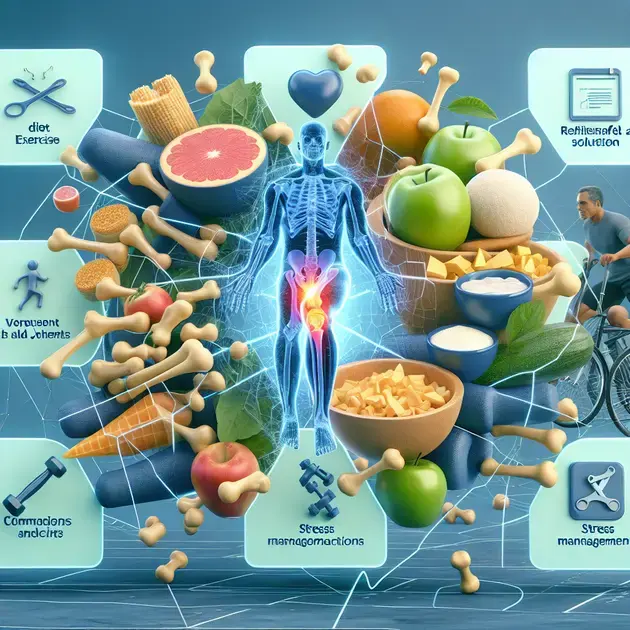When it comes to managing diabetes, one crucial aspect is achieving normal glucose levels after a meal. This can have a significant impact on overall health and well-being, as high post-meal blood sugar levels can lead to various complications over time.
With advancements in research and technology, there are several effective strategies that can help individuals in achieving normal glucose levels after a meal. From mindful eating habits to incorporating physical activity into your routine, there are plenty of options to explore for better blood sugar management.

Achieving Balanced Glucose Levels Post-Meal
Ensuring balanced glucose levels post-meal is crucial for overall health and well-being, especially for individuals with diabetes or insulin resistance. One effective strategy is to incorporate fiber-rich foods into your meals, such as vegetables, whole grains, and legumes. Fiber helps slow down the absorption of sugar in the bloodstream, preventing rapid spikes in blood glucose levels. Additionally, incorporating protein sources like lean meats, fish, tofu, or legumes can help stabilize blood sugar levels after eating.
Tracking your meals and blood sugar levels using mobile apps like MyFitnessPal or Glucose Buddy can provide valuable insights into how different foods affect your body. These apps allow you to log your meals, monitor your glucose levels, and identify patterns to make informed decisions about your diet. Consistently monitoring your blood sugar levels can help you make adjustments to your diet and lifestyle to achieve balanced glucose levels post-meal.
Another important aspect of maintaining balanced glucose levels is staying hydrated. Drinking an adequate amount of water throughout the day can help regulate blood sugar levels and prevent dehydration, which can affect glucose metabolism. Aim to drink at least 8-10 glasses of water daily and limit sugary beverages that can cause blood sugar spikes.
Incorporating regular physical activity into your daily routine is also key to achieving balanced glucose levels post-meal. Apps like Fitbit or Strava can help you track your exercise habits and monitor your progress. Engaging in activities like walking, cycling, or strength training after meals can improve insulin sensitivity and help lower blood sugar levels. Aim for at least 30 minutes of moderate exercise most days of the week.
Finally, practicing mindful eating techniques can also contribute to maintaining healthy blood sugar levels after meals. Apps like Eat Slowly or Rise Up – Health & Wellness offer guided meditation and mindful eating exercises to help you slow down, savor each bite, and pay attention to your body’s hunger and fullness cues. Mindful eating can prevent overeating, promote better digestion, and support stable blood sugar levels.
The Importance of Maintaining Healthy Blood Sugar After Eating
Maintaining healthy blood sugar levels after eating is essential for overall health and can help prevent long-term complications associated with uncontrolled blood sugar, such as diabetes and heart disease. One effective strategy is to choose complex carbohydrates over simple sugars in your meals. Foods like whole grains, fruits, and vegetables provide a steady release of glucose into the bloodstream, avoiding sudden spikes and crashes in blood sugar levels.
Using a continuous glucose monitor (CGM) like Dexcom G6 or FreeStyle Libre can provide real-time data on your blood sugar levels after meals. These devices offer insights into how different foods, exercise, and stress levels affect your glucose levels, allowing you to make timely adjustments to keep your blood sugar within a healthy range. CGMs can be particularly helpful for individuals with diabetes or prediabetes.
Another important aspect of maintaining healthy blood sugar after eating is to prioritize portion control and meal timing. Apps like MyPlate or MySugr Diabetes Tracker can help you plan balanced meals, set reminders for eating at regular intervals, and track your portions to avoid overeating. Eating smaller, frequent meals throughout the day can prevent sharp fluctuations in blood sugar levels.
Including healthy fats like avocados, nuts, and olive oil in your meals can also aid in regulating blood sugar levels after eating. Fats slow down the absorption of glucose in the bloodstream, providing a more sustained release of energy and preventing sudden blood sugar spikes. Incorporating these fats in moderation can promote satiety and help maintain stable blood sugar levels.
Engaging in stress-reducing activities like yoga, meditation, or deep breathing exercises can further support healthy blood sugar levels after meals. Apps like Headspace or Calm offer guided meditation sessions and relaxation techniques to help lower stress levels and improve overall well-being. Chronic stress can contribute to elevated blood sugar levels, so managing stress is essential for maintaining healthy glucose metabolism.
Effective Strategies for Regulating Glucose Levels After Meals
Regulating glucose levels after meals involves a combination of mindful eating habits, physical activity, and monitoring techniques to ensure optimal blood sugar control. One effective strategy is to practice carbohydrate counting and meal planning using apps like MyNetDiary or CarbsControl. These tools can help you calculate the carbohydrate content of your meals, make informed food choices, and maintain a consistent intake of carbohydrates to keep blood sugar levels stable.
Engaging in post-meal walks or light exercise can also help regulate glucose levels by promoting insulin sensitivity and glucose uptake in the muscles. Apps like Nike Training Club or 7 Minute Workout offer quick and effective exercise routines that you can incorporate into your daily routine after meals. Aim to move your body within 30 minutes to an hour after eating to support glucose regulation.
Monitoring your blood sugar response to different meals and snacks using a blood glucose meter like OneTouch Verio or Accu-Chek Guide can provide valuable information on how your body processes food. By keeping a food diary and tracking your blood sugar levels before and after meals, you can identify which foods cause blood sugar spikes and make adjustments accordingly.
Including chromium-rich foods like broccoli, barley, and green beans in your meals can also aid in regulating glucose levels post-meal. Chromium is a trace mineral that plays a crucial role in insulin signaling and glucose metabolism. Adding these foods to your diet can support healthy blood sugar control and reduce the risk of hyperglycemia.
Practicing portion control and avoiding late-night snacking can further contribute to stable blood sugar levels after meals. Apps like MyFitnessPal or Lose It! can help you track your daily food intake, set goals for portion sizes, and establish a consistent eating schedule to avoid sudden spikes or drops in blood sugar. Consistency in meal timing and portion sizes is key to maintaining balanced glucose levels throughout the day.

Maintaining Optimal Blood Sugar Levels Following a Meal
After consuming a meal, it is crucial to pay attention to maintaining optimal blood sugar levels to promote overall health and well-being. When blood sugar levels spike or drop dramatically, it can lead to various health issues, including diabetes and fatigue. To effectively manage blood sugar levels post-meal, consider the following tips:
1. Choose Complex Carbohydrates
Opt for complex carbohydrates such as whole grains, fruits, and vegetables over simple carbohydrates like sugary snacks and refined grains. Foods high in fiber take longer to digest, leading to a slower rise in blood sugar levels.
2. Incorporate Lean Proteins
Include lean proteins such as poultry, fish, tofu, or legumes in your meals. Protein helps slow down the absorption of sugar into the bloodstream, preventing sudden spikes in blood sugar levels.
3. Monitor Portion Sizes
Be mindful of portion sizes to avoid overeating, which can cause blood sugar levels to surge. Dividing your plate into sections for proteins, carbohydrates, and vegetables can help you create a balanced meal.
4. Stay Hydrated
Drink an adequate amount of water throughout the day to support proper digestion and regulate blood sugar levels. Dehydration can lead to increased blood sugar concentrations, so it’s essential to stay hydrated.
5. Engage in Physical Activity
Regular exercise can help improve insulin sensitivity and assist in managing blood sugar levels. Aim for a combination of cardiovascular exercise and strength training for optimal results.
Nutritional Tips for Managing Glucose Levels After Eating
Effective glucose management is essential for individuals looking to maintain stable blood sugar levels after eating. By making smart nutritional choices, it is possible to keep glucose levels in check and promote overall health. Here are some tips for managing glucose levels:
1. Include Fiber-Rich Foods
Incorporate fiber-rich foods such as whole grains, legumes, and vegetables into your meals. Fiber helps slow down the absorption of glucose, preventing rapid spikes in blood sugar levels.
2. Prioritize Healthy Fats
Opt for sources of healthy fats like avocados, nuts, and olive oil. Consuming these fats in moderation can help stabilize blood sugar levels and promote satiety after a meal.
3. Limit Added Sugars
Avoid foods and beverages that are high in added sugars, as they can cause blood sugar levels to rise quickly. Opt for naturally sweet options like fruits to satisfy your sweet cravings.
4. Monitor Carbohydrate Intake
Keep track of your carbohydrate intake, especially if you have diabetes or insulin resistance. Balancing the amount and type of carbohydrates you consume can help regulate glucose levels.
5. Choose Nutrient-Dense Foods
Select nutrient-dense foods that provide essential vitamins and minerals without causing significant blood sugar fluctuations. Incorporating a variety of colorful fruits and vegetables can help you achieve a well-rounded diet.
Key Factors in Achieving Stable Post-Meal Blood Sugar Levels
Stability in post-meal blood sugar levels plays a vital role in overall health and can significantly impact energy levels and mood. By focusing on key factors that contribute to stable blood sugar levels, individuals can better manage their glucose levels. Consider the following factors:
1. Timing of Meals
Establish a consistent meal schedule by eating at regular intervals throughout the day. This practice can help regulate blood sugar levels by preventing prolonged periods of fasting or overeating.
2. Mindful Eating Practices
Practice mindful eating by paying attention to hunger cues and savoring each bite. Eating slowly and chewing food thoroughly can aid in digestion and prevent sudden spikes in blood sugar levels.
3. Stress Management
Reduce stress levels through relaxation techniques such as meditation, deep breathing, or yoga. High levels of stress can lead to elevated blood sugar levels, so incorporating stress-reducing activities into your daily routine is essential.
4. Regular Blood Sugar Monitoring
If you have diabetes or are at risk of developing blood sugar imbalances, monitor your levels regularly. Keeping track of your blood sugar readings can help you make informed decisions about your dietary choices and lifestyle habits.
5. Consult with a Healthcare Professional
For personalized guidance on managing blood sugar levels, consider consulting with a healthcare professional or a registered dietitian. They can provide tailored recommendations based on your individual needs and health goals.
Conclusion
Optimal blood sugar levels play a crucial role in maintaining overall health and well-being, especially after meals. By following key strategies such as choosing complex carbohydrates, incorporating lean proteins, monitoring portion sizes, staying hydrated, and engaging in physical activity, individuals can effectively manage their blood sugar levels post-meal.
When it comes to managing glucose levels after eating, focusing on fiber-rich foods, healthy fats, limited added sugars, controlled carbohydrate intake, and nutrient-dense options can help stabilize blood sugar levels and promote overall health. These nutritional tips are essential in preventing rapid spikes in blood sugar levels and ensuring a well-rounded diet.
Achieving stable post-meal blood sugar levels is vital for energy levels and mood regulation. Factors such as meal timing, mindful eating practices, stress management, regular blood sugar monitoring, and seeking guidance from healthcare professionals are key in managing glucose levels effectively for individuals with diabetes or those at risk of blood sugar imbalances.

















